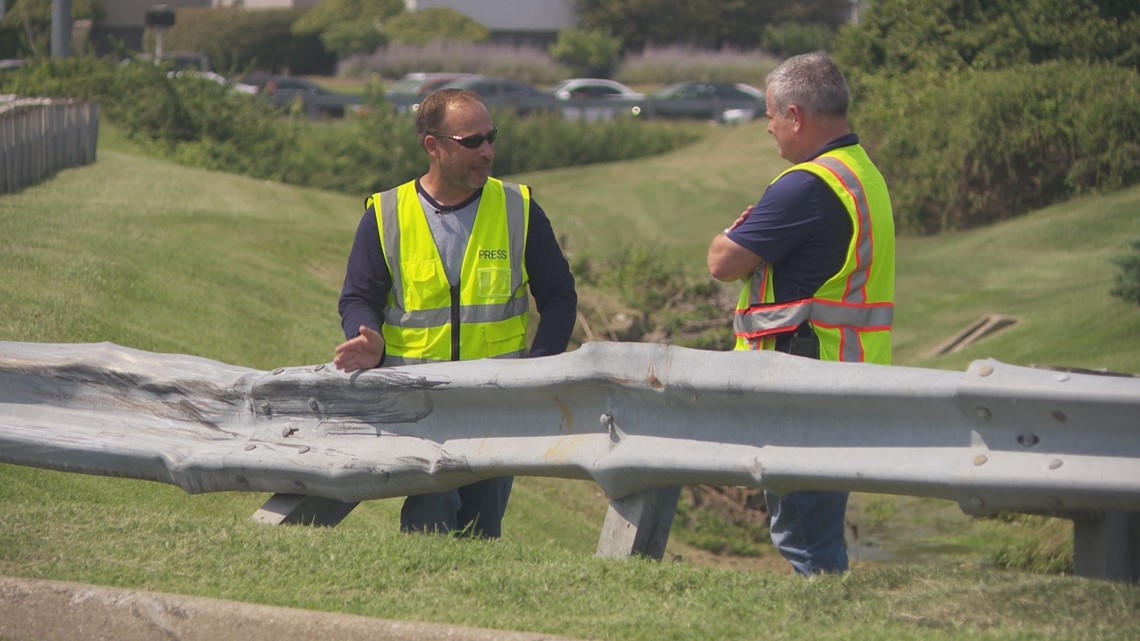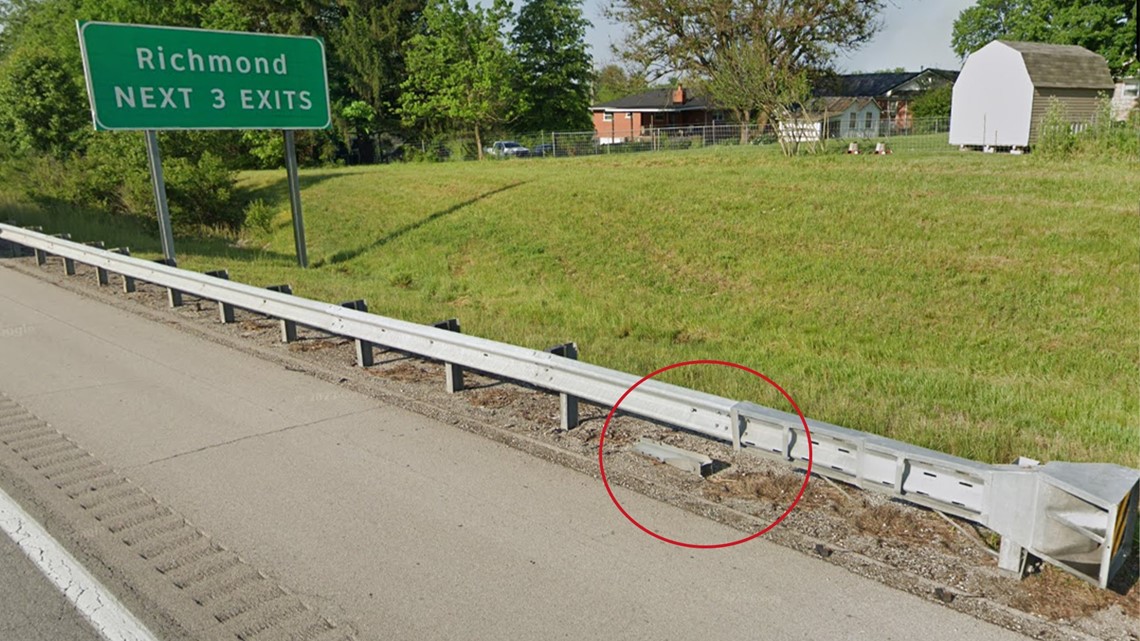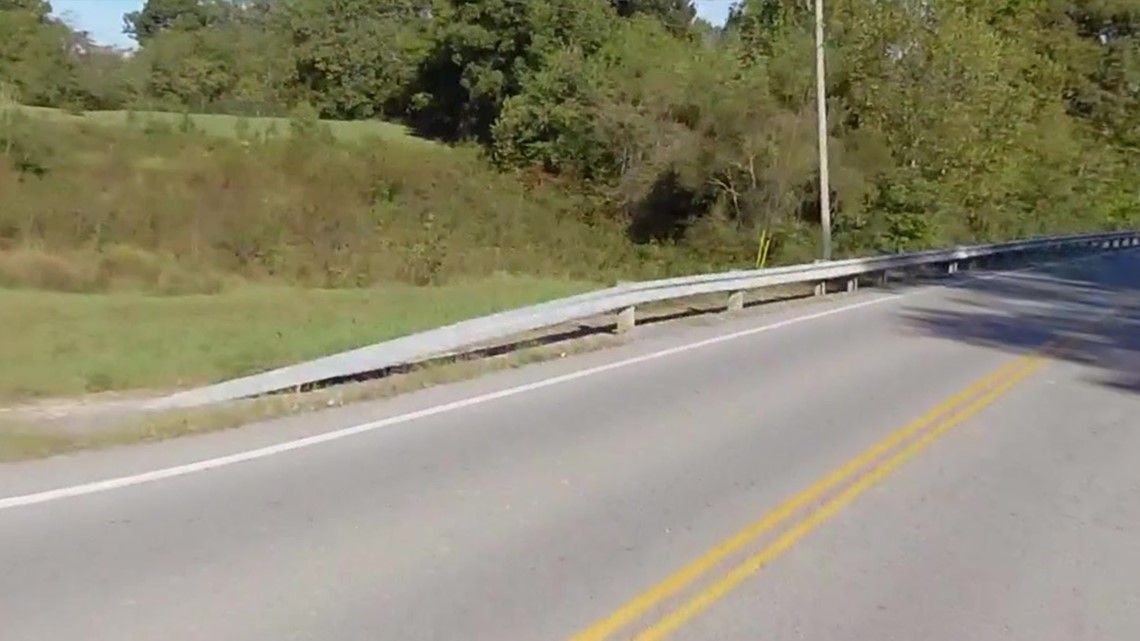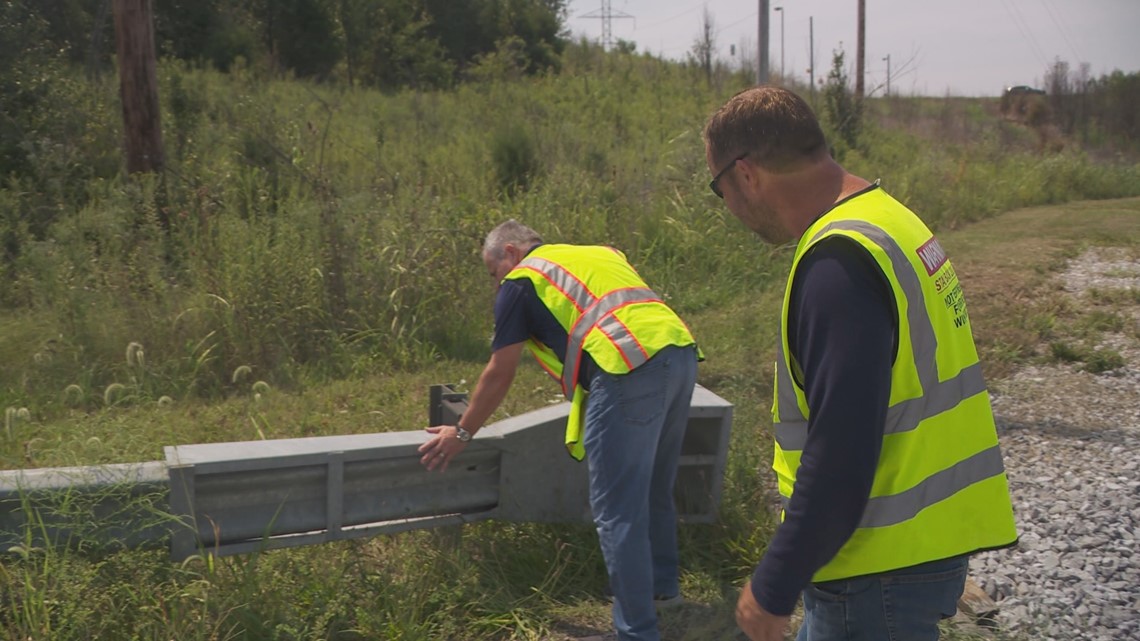LOUISVILLE, Ky. — Hannah Eimers was driving on I-75 near Knoxville, Tenn. on Nov. 1, 2016 when she lost control of her vehicle.
Her car slammed into the end terminal of a guardrail system, which had been linked to other deadly crashes.
“It speared through her vehicle,” her father Steve Eimers, 47, said. “She was embedded in the back seat.”
Hanna was only 17 years old when she died.
In a letter to the Federal Highway Administration, the Tennessee Department of Transportation (TDOT) stated its field staff "expressed concerns" in June of 2016 regarding installations of the end terminals and TDOT then made the decision to no longer install the end terminals as of Oct. 25, 2016, just days before Hanna's crash.
Although still federally approved, TDOT eventually made the decision to remove that particular end terminal from guardrail systems throughout the state and to replace them.
Today, Eimers is constantly on guardrail inspection, and he's become quite the expert.
“I’ve developed a unique skill and came out of a lot of tragedy,” he said.
Problems across Kentuckiana
His life’s mission to force states to pay more attention to old, obsolete and damaged guardrails is why Eimers and his family made the drive up from Tennessee to Louisville to take WHAS11's FOCUS team on an inspection ride-along.
Over a relatively short distance, Eimers pointed out several guardrails improperly installed and even more with significant damage where sections were clearly hit.
“We have so much latent damage on guardrails in America, it’s not funny,” he said. “For Kentucky, I’d say their biggest problem that I have seen is they just often don’t fix stuff, they just leave it, and leave it, and leave it, and leave it.”


A guardrail in Jeffersontown, near the intersection of Hurstbourne Parkway and Taylorsville Road, was hit so hard that Eimers said if it doesn't get fixed soon, the next carthat crashes into it will “will go right over the top,” and into a culvert.
Heading over to Indiana, across the Abraham Lincoln Bridge, Eimers quickly spotted another problem.
“That [guardrail's] improperly bolted," he notes. "First one into Indiana, boom, it’s improperly installed.”


Moving into the Clarksville area, Eimers' spotted what’s called a "turned-down" guardrail, which is now obsolete. It also happened to be located right across from an Indiana Department of Transportation (INDOT) compound on US-31.
“It is a ramp,” Eimers said as he explained that this kind of system has sent cars flying and flipping.
However, about a mile down the highway, Eimers spotted a monster. “That one’s 'Frankensteined,'” he said.
What are 'Frankenstein' guardrails?
A "Frankenstein" guardrail is installed with mismatched parts from completely different systems, often rendering them ineffective and dangerous.
“This does not go together,” Eimers said pointing to the end terminal. “It’s mixed parts and one of the more absurd examples of mixed parts that I think I’ve ever seen.”
FOCUS alerted INDOT about the issue, and within days, crews corrected the problem.
“The scary thing is we were less than a mile or two from the INDOT regional office for that area,” Eimers said.
According to INDOT, highway crews travel their routes weekly and as they drive around, “they note deficiencies that require repair, including guardrails.” Yet somehow crews overlooked the faulty guardrail, which according to Google Streetview had been wrong for at least 15 years.
'Follow the directions.'
FOCUS asked both INDOT and the Kentucky Transportation Cabinet (KYTC) specific questions about the inspection and maintenance of their respective state’s guardrails.
Instead of directly answering our questions, the Kentucky Transportation Cabinet offered a general, four-line statement.
Officials said each of KYTC's 12 Department of Highways districts "routinely patrol roadways and check for potential problems, including guardrail conditions and replacement needs."


"Kentuckians can contact us directly about guardrails, as do insurance companies and state or local police," the cabinet said. "The cabinet keeps an inventory of locations that need a guardrail, and all guardrails are repaired and/or installed by KYTC or through contractors according to manufacturers’ specifications and installation guidance."
INDOT officials said the majority of guardrail replacements are completed by contractors. Most repairs are complete within three business days, however contractors are given up to 60 days for cosmetic repairs.
As for how problems are reported, the department's DamageWise app is used when a crash occurs and police are involved. The public can make reports using INDOT's online portal or by phone at 855-463-6848.


Regardless, Eimers says installers, whether state employees or contractors, have to be better trained.
“I’m an expert because I read the installation manuals,” he said. “They can be an expert too, just read the installation manuals and follow the directions.”
Eimers pleads with states that “it’s time to take this kind of stuff seriously.”
“Most of America believes that if they hit a guardrail, they’re going to be protected, that is a lie,” he said.
Make it easy to keep up-to-date with more stories like this. Download the WHAS11 News app now. For Apple or Android users.
Have a news tip? Email assign@whas11.com, visit our Facebook page or Twitter feed.

